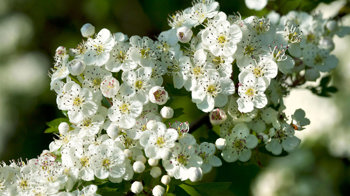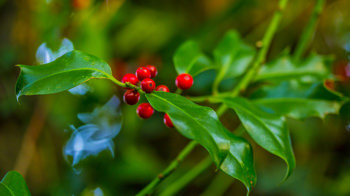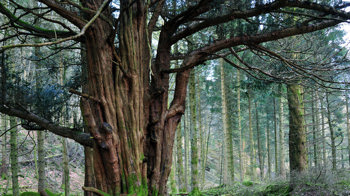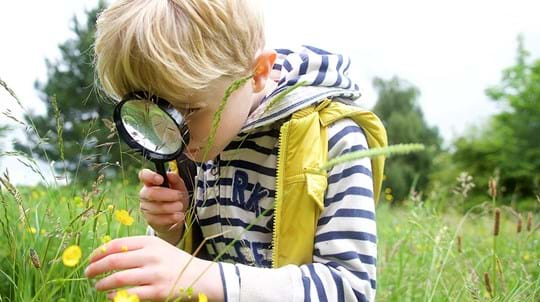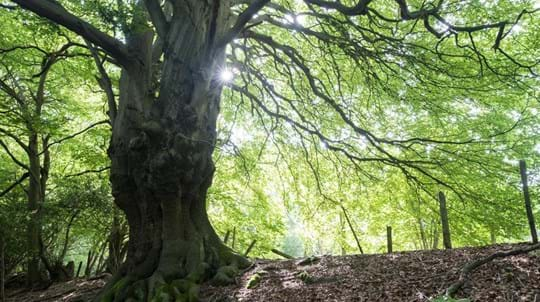
Blackbush & Twenty Acre Shaw Woods
Cudham

Woodland Trust wood group
- Blackbush Shaw
- Twenty Acre Shaw
- Blackbush & Twenty Acre Shaw Ext1
- Blackbush & Twenty Acre Shaw Ext2
18.84 ha (46.55 acres)
TQ440593
Explorer 147
OS Landranger 187
Lying in the vicinity of Down House, home to naturalist Charles Darwin, these two woods boast ancient trees, wonderful wildflower displays and are important wildlife habitats.
Explore 27 hectares of ancient woodland and chalk grassland, home to beautiful orchid species and the uncommon autumn gentian. The new woodland establishing itself here is also taking root without the planting of a single tree.
Features
- Parking nearby
- Public access
- Autumn colour
- Spring flowers
- Grassland
- Broadleaved woodland
How to get to Blackbush & Twenty Acre Shaw
Blackbush & Twenty Acre Shaw is half a mile west of the village of Cudham, south of Orpington, in the London Borough of Bromley. It is situated on east-facing slopes in the attractive Downe Valley, within the North Downs National Character Area.
It is close to the county boundary of Kent and Surrey, around 3 miles north of the M25 between junctions 5 and 6.
Blackbush Shaw & Twenty Acre Shaw lie half a mile west of the village of Cudham and east of the hamlets Berry's Green and Single Street, south of Orpington, in the London Borough of Bromley, approximately 3 miles north of the M25 between junctions 5 and 6.
The nearest train stations are Chelsfield (approx. 3.5 miles north) and Dunton Green (approx. 6 miles east).
For more information on local public transport services visit www.traveline.info.
The nearest bus stop is at the Blacksmiths Arms pub in Cudham, which is next to the recreational ground.
For more information on local public transport services visit www.traveline.info.
Facilities and access
There are three pedestrian entrances to Blackbush Shaw: off Berry's Hill, via a public footpath off New Barn Lane, and by a public footpath entrance from the east side of the Restavon Park.
There are also three entrances to Twenty Acre Shaw: one next to the management gate on Luxted Road, one via a public footpath off Luxted Road, and another from the east side of the wood at a public footpath entrance from surrounding countryside.
There are two public footpaths running through the woods. One cuts through Blackbush Shaw from New Barn Lane to Restavon Park, in an east-west direction. The other cuts down from Single Street through the middle of Twenty Acre Shaw going east-west.
There are other permissive paths, especially in Blackbush Shaw, which can be used to enjoy more of the woods. All paths are unsurfaced and there are some steep slopes.
The best place to park is at the recreation ground in Cudham (next to the Blacksmiths Arms pub). From here walk down New Barn Lane (no pavement); or walk along Cudham Lane from the pub to a public footpath on the right which crosses New Barn Lane and then enters Blackbush Shaw after walking down a set of wooden steps.
The nearest public toilets are on High Street, Green Street Green, on the southern edge of Orpington, which is approximately 4 miles from these woods. The toilets do not have a designated disabled facility.
Wildlife and habitats
Animals
The mix of woodland and grassland habitats here attract a wide variety of wildlife, including butterflies such as marbled white and comma. Look out too for birds including green woodpecker and wren.
Trees, plants and fungi
Part of Twenty Acre Shaw is designated a Site of Special Scientific Interest for its outstanding veteran trees, including beech and ash pollards. Look for large ancient beech trees in Blackbush Shaw, especially on the higher ground.
Stunning displays of bluebells greet you in spring, along with wood anemone and yellow archangel. Other species brightening up the woodland floor, such as yellow archangel, lords-and-ladies and dog violet, are all associated with ancient woodland. Keep an eye out too for bird's-foot trefoil, white bryony, wild marjoram, wood spurge, wood speedwell and toothwort - a parasitic oddity that lacks chlorophyll and grows from the roots of surrounding trees.

Dedicate at this wood
This wood is one of more than 50 across the UK where it's possible to dedicate trees, benches or larger areas of woodland. Mark a special occasion or celebrate the life of a loved one with a meaningful gesture that lasts.
Choose a dedicationHabitats
Blackbush & Twenty Acre Shaw is a mix of ancient and long-established native broadleaf woodland. In Blackshaw, you’ll also find an area of naturally regenerating scrubby woodland and two pockets of chalk grassland.
Chalk grassland is vital for a diverse range of plants and invertebrates. Sadly, almost 98% of it has been lost in the last 100 years due to changes in land use. The meadow here supports at least five types of orchid, including bee, fly, pyramidal and early purple. The rare autumn gentian is also found here.
About Blackbush & Twenty Acre Shaw
History
Renowned naturalist Charles Darwin lived in the Cudham valley at Down House, from where he wrote his book The Origin of Species. It was from there he used to explore these woods. We know from old maps and his diaries that the paths through the woods are largely unchanged, so as you walk here you'll be walking in his footsteps.

A lasting legacy
This wood is just one of many to have been protected by gifts in wills, securing it for generations to come. Your legacy gift could also make a real difference to woods, trees and wildlife.
Learn what your gift could meanThings to do at Blackbush & Twenty Acre Shaw
Walks
Around 3km (2 miles) of paths give good access to both sites. Two public rights of way also pass through, linking to the surrounding countryside.
The 12km (7.5 mile) waymarked Cudham Circular Walk runs through Twenty Acre Shaw. All paths are unsurfaced and be prepared for some steep slopes.
If you’d like to walk between the two woods, public and permissive footpaths link them in a circuit of approximately 3.3km (2 miles), with some of the route on roads.

























